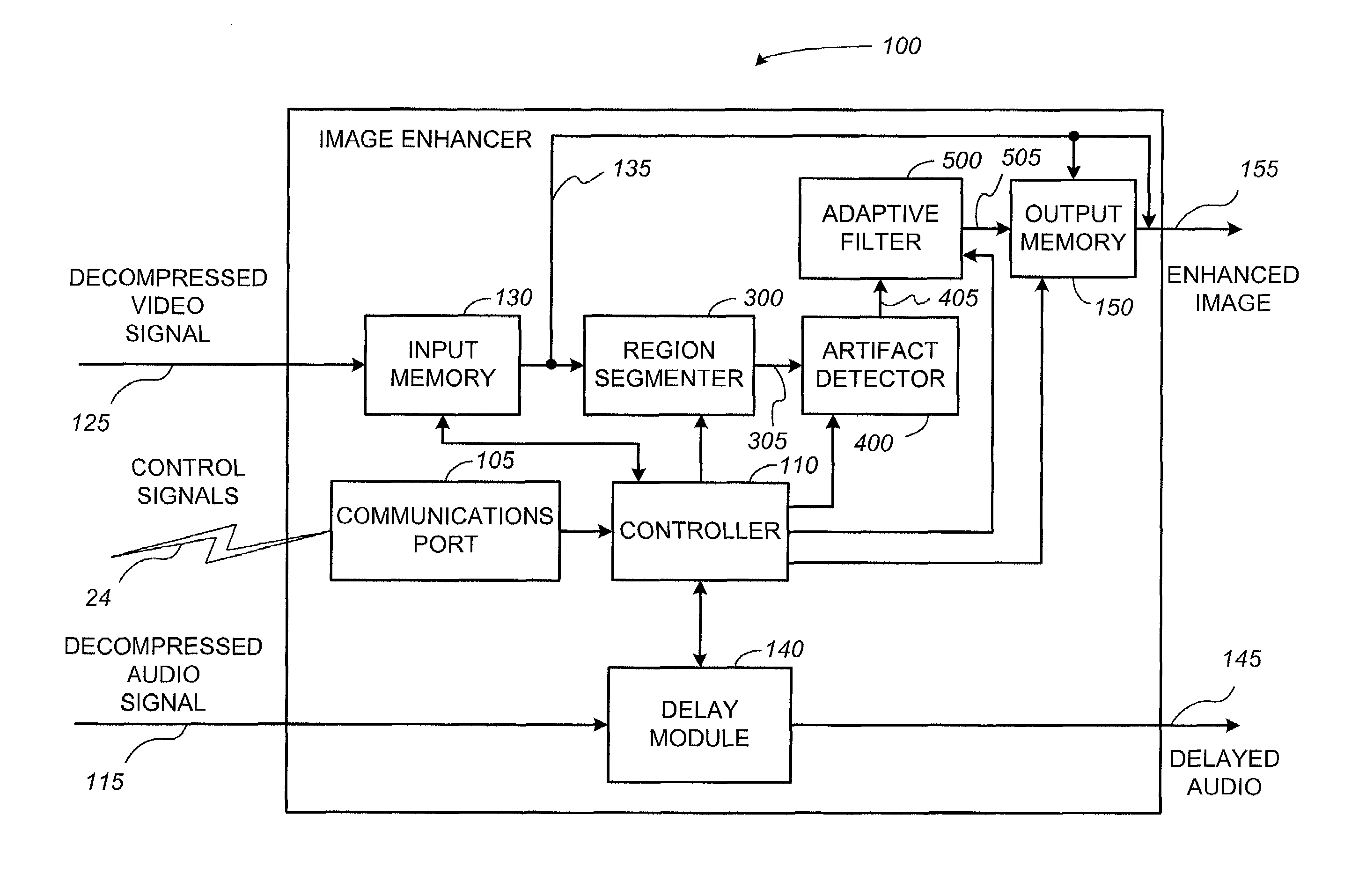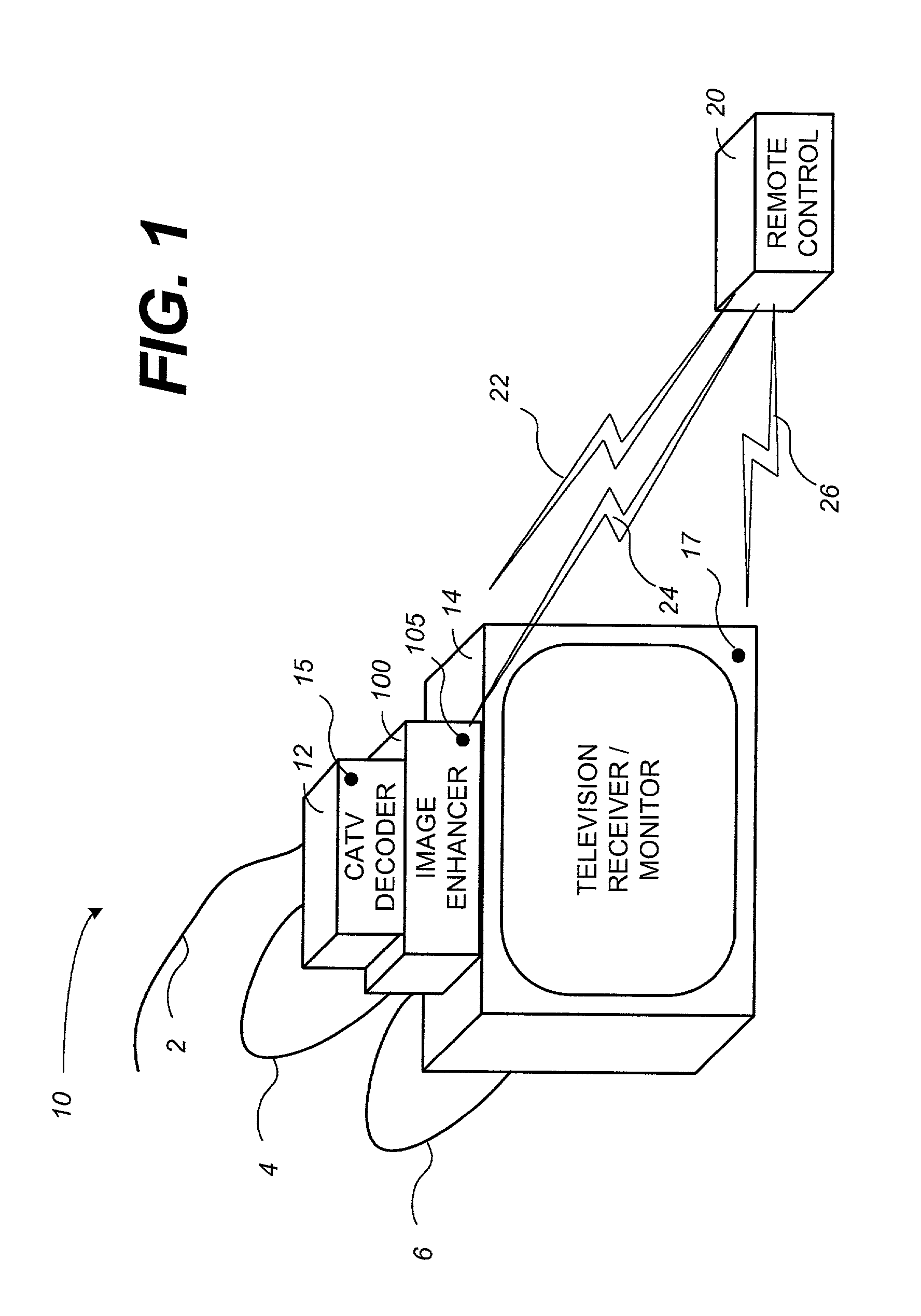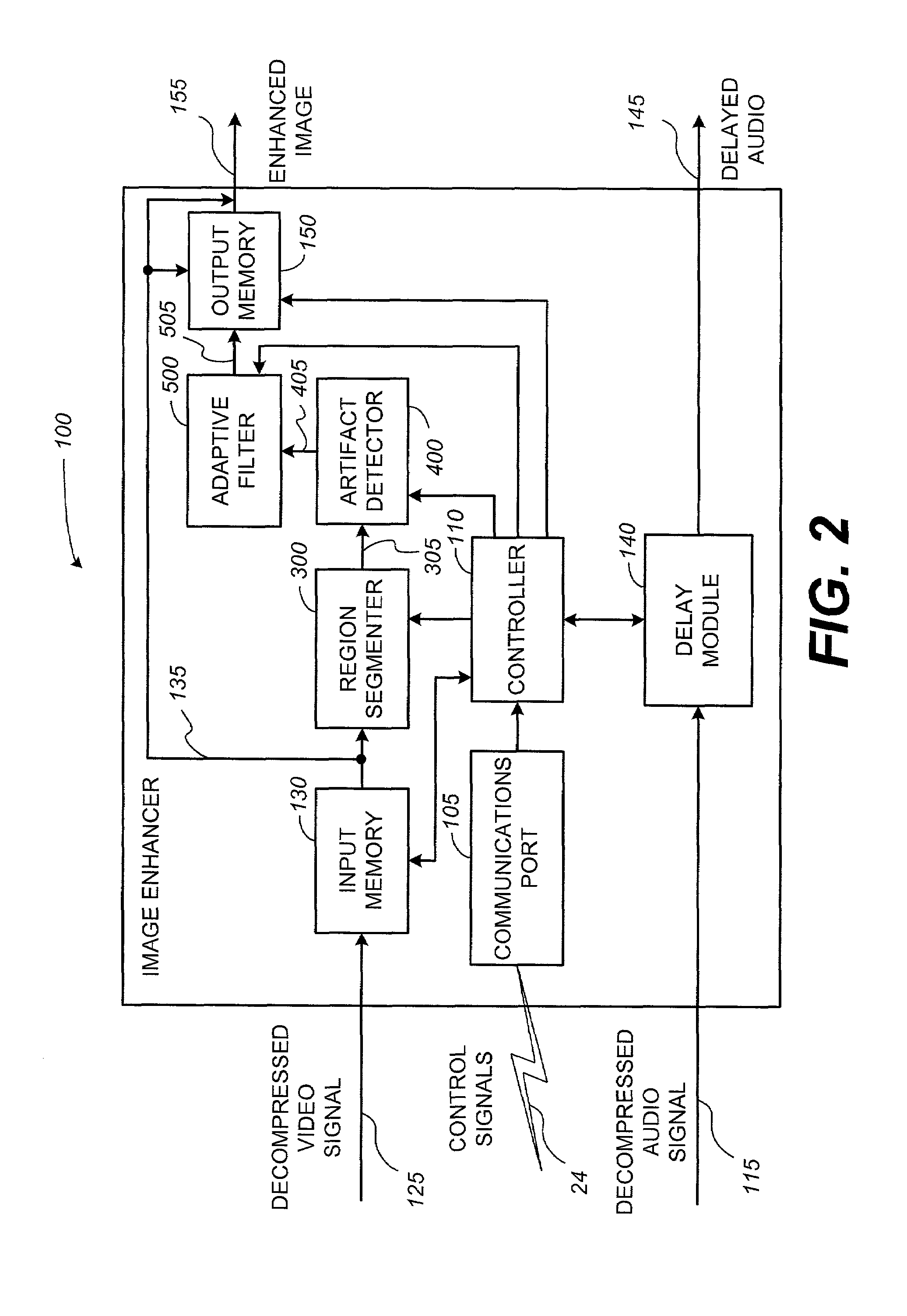System and method for improving image quality in processed images
a processing system and image technology, applied in image enhancement, image analysis, visual presentation, etc., can solve the problems of high loss, black-and-white (1-bit-per-pixel) images that cannot handle motion picture compression, and jpeg compression cannot handle non-realistic images, so as to smooth the discontinuity of picture elements
- Summary
- Abstract
- Description
- Claims
- Application Information
AI Technical Summary
Benefits of technology
Problems solved by technology
Method used
Image
Examples
Embodiment Construction
[0037]Having summarized various aspects of the present invention, reference will now be made in detail to the description of the invention as illustrated in the drawings. While the invention will be described in connection with these drawings, there is no intent to limit it to the embodiment or embodiments disclosed therein. On the contrary, the intent is to cover all alternatives, modifications and equivalents included within the spirit and scope of the invention as defined by the appended claims.
[0038]Turning now to the drawings, wherein like referenced numerals designate corresponding parts throughout the drawings, reference is made to FIG. 1, which illustrates a schematic of an exemplary operational environment suited for an image enhancer. In this regard, an exemplary operational environment 10 may comprise a community antenna television (CATV) decoder 12, an image enhancer 100, a television receiver / monitor 14, and a multiple-unit remote control 20. As illustrated in FIG. 1, a...
PUM
 Login to View More
Login to View More Abstract
Description
Claims
Application Information
 Login to View More
Login to View More - R&D
- Intellectual Property
- Life Sciences
- Materials
- Tech Scout
- Unparalleled Data Quality
- Higher Quality Content
- 60% Fewer Hallucinations
Browse by: Latest US Patents, China's latest patents, Technical Efficacy Thesaurus, Application Domain, Technology Topic, Popular Technical Reports.
© 2025 PatSnap. All rights reserved.Legal|Privacy policy|Modern Slavery Act Transparency Statement|Sitemap|About US| Contact US: help@patsnap.com



